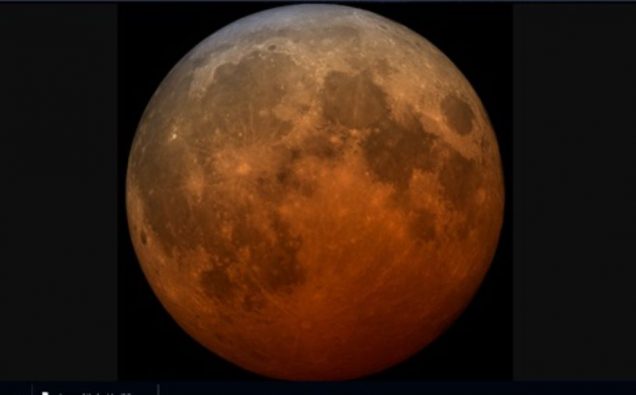
Named by Native Americans as the Flower Moon for its emergence in the sky at the time of spring flower bloom on Earth, May’s full moon will shine with its full brightness early Wednesday
The National Aeronautics and Space Agency says the moon will be located on Earth’s opposite side from the Sun and fully illuminated May 26, 2021, at 6:13 a.m. CDT.
The Flower Moon will have the nearest approach to Earth, making it appear as the closest and largest Full Moon of the year, a NASA blog said, comparing it with other full moons of this year.
But the Flower Moon holds tremendous attraction for Nature and sky watchers as a supermoon and is distinct for its red color, as described in the NASA blog:
“This is what is commonly referred to as a “supermoon”. Yet, it’s not just bringing brightness and size. May’s supermoon is also bringing a “superpower” to change its color, and the color is red!”
The celestial event will pretty much remind of the red planet Mars and also on Wednesday total lunar eclipse will happen, around two and a half years since it happened last time.
“A total lunar eclipse occurs when the Moon passes completely through the Earth’s dark shadow or umbra. During this type of eclipse, the Moon will gradually get darker, taking on a rusty or blood-red color. The color is so striking that lunar eclipses are sometimes called Blood Moons.”
According to NASA, the total eclipse phase will be visible near moonset in the western United States and Canada, all of Mexico, most of Central America and Ecuador, western Peru, and southern Chile and Argentina.
Additionally, the eclipse can be seen in its entirety in eastern Australia, New Zealand, and the Pacific Islands, including Hawaii.
But people won’t need special glasses to view this lunar eclipse, as they do in the case of a solar eclipse.
“Folks in Hawaii and the Aleutian Islands will get to see the entirety of this eclipse – it will be quite a show for them,” said Bill Cooke, Lead, NASA Meteoroid Environments Office.
To be precise, the eclipse is set to begin May 26 at 1:46 a.m. PDT, with the Moon entering the darkest part of the Earth’s shadow at 2:45 a.m. with a total blanketing of the moon’s surface between 4:11 and 4:26 a.m.












